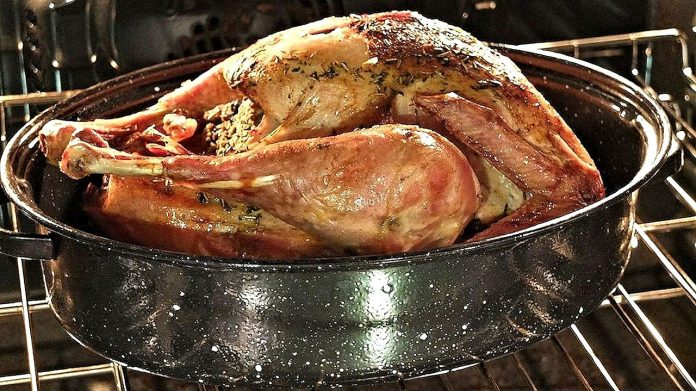It’s finally that time of year again — Thanksgiving! Even if it’s not your favorite holiday, who doesn’t enjoy a delicious home-cooked meal with family? I know I sure do!
The family recipes, catching up with the relatives you haven’t seen since last year and watching football with dad. The traditions are endless and the relaxation is real. So let’s keep it that way and make food safety a priority.
Whether you’re at mom’s, grandma’s or your house, it’s always a good idea to keep food safety in mind on Thanksgiving. Nothing can ruin the holiday quicker than giving the whole family food poisoning.
Turkey safety
Food safety specialists warn us to take extra caution cooking and handling our turkeys this year. A multi-state outbreak of Salmonella infections has been linked to raw turkey products, but not to a single supplier. It’s still safe to eat properly cooked turkey products, but it’s even more important to handle turkey carefully and cook it thoroughly. Keep these tips in mind to ensure food safety:
- Clean. There should also be an increased focus on cleanliness throughout the preparation, cooking and serving processes on Thanksgiving, washing hands and sanitizing any surfaces and utensils that come in contact with the raw turkey.
- Separate. Keep your raw turkey separate from fruits and vegetables to avoid cross-contamination.
- Chill. Put leftovers away quickly. Make sure the temperature in your refrigerator is set below 40 F and good air circulation is possible after food is stored.
- Cook. Always use a food thermometer to make sure your turkey is fully cooked. You want to cook to an internal temperature of 165F.
Biggest Thanksgiving dinner mistakes
- Thawing the turkey on the kitchen counter. Turkeys can be safely thawed three ways — in the refrigerator, in cold water or in the microwave. However, they should not be left out on the counter to thaw. This can actually be dangerous. The safest method is thawing your bird in the refrigerator, allowing 24 hours of thaw time for every 4-5 pounds of turkey.
- Rinsing your turkey prior to cooking. Rinsing your turkey under a faucet before cooking it doesn’t help remove microorganisms that may be present such as Salmonella and Campylobacter bacteria. It actually does more harm than good as water can splash from the raw bird to hands, clothes, surrounding surfaces and cooking utensils, increasing the possibility for cross-contamination.
- Stuffing your turkey. Food safety experts recommend cooking stuffing separately for a couple of reasons — increased cooking time and exposure to bacterial pathogens uncooked poultry can harbor. However, many Thanksgiving traditionalists like to cook their stuffing inside the turkey cavity. If you plan to do that make sure you wait to prepare your stuffing until right before it’s placed in the turkey and don’t pack it too tightly. To ensure it is safe to eat when the turkey is finished cooking, make sure the stuffing also cooked to a safe internal temperature of 165F by checking it with your food thermometer.
- Cooking your turkey based on the color of its juices or darkness of its skin. The only way to ensure your turkey is done is to check its internal temperature with a food thermometer. At 165F, you can have the peace of mind that any harmful bacteria has been destroyed. Make sure to check your turkey in the two separate locations where the meat is thickest.
- Allowing leftovers to reach room temperature. Turkey and stuffing leftovers should be stored separately in shallow containers within two hours of cooking. If you plan to send leftovers home with guests that live more than two hours away, make sure you pack the leftovers in coolers with ice. Leftover turkey will only keep in the fridge for three to four days, while gravy and stuffing have an even shorter shelf life of one to two days. Frozen leftovers should be used within two to six months. All leftovers should be reheated to a safe internal temperature of 165F.
Have a delicious and safe Thanksgiving!















